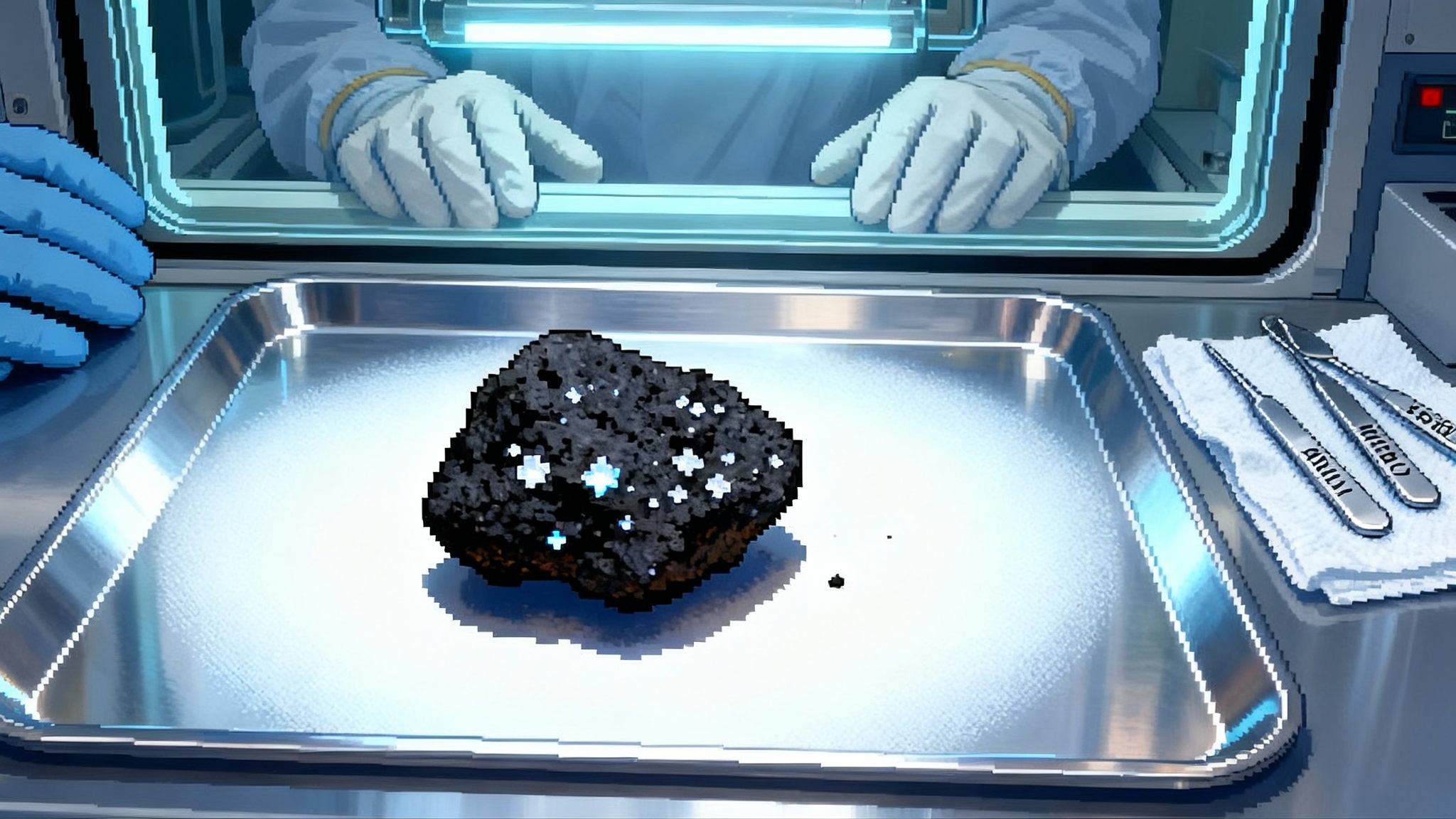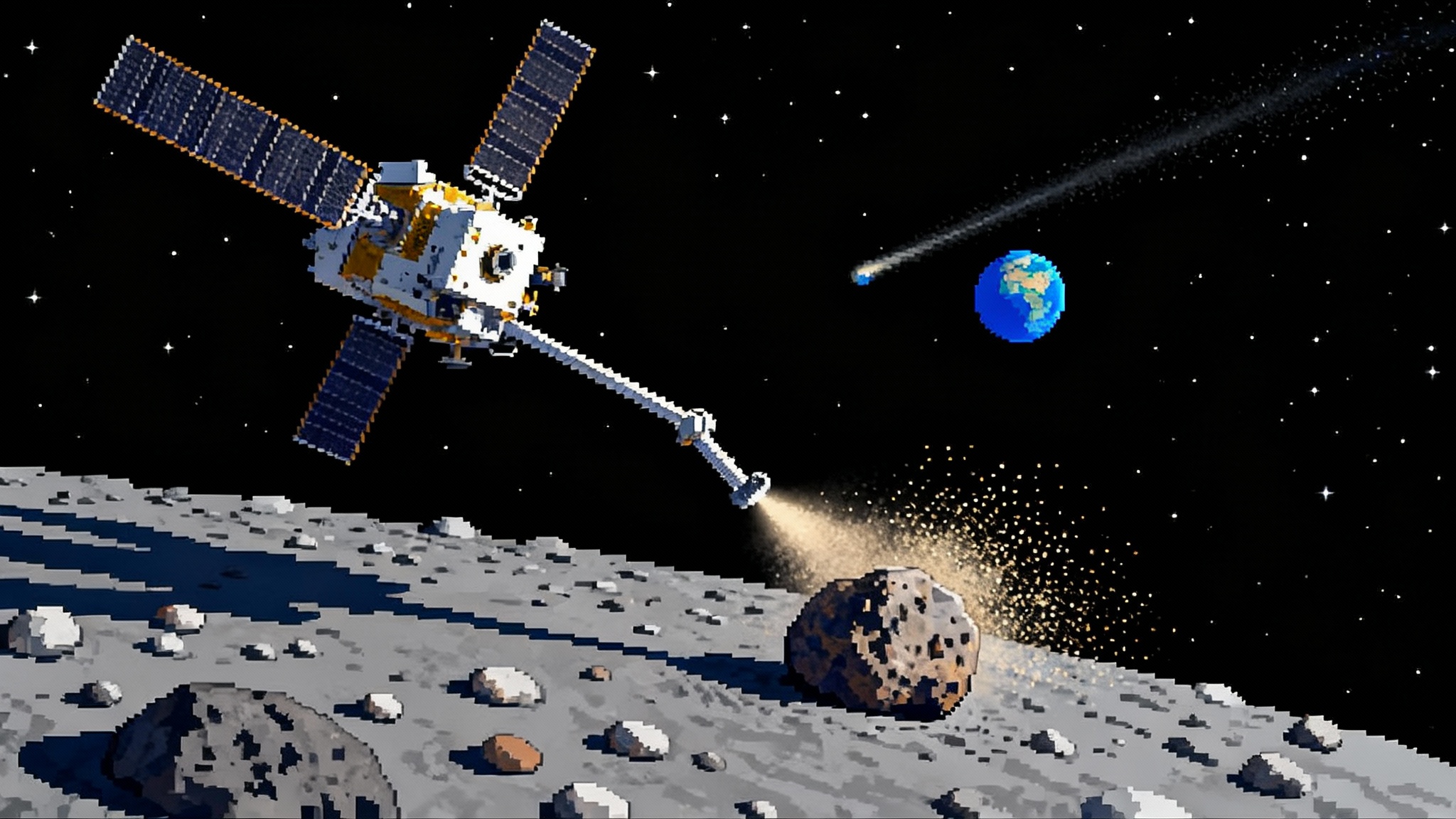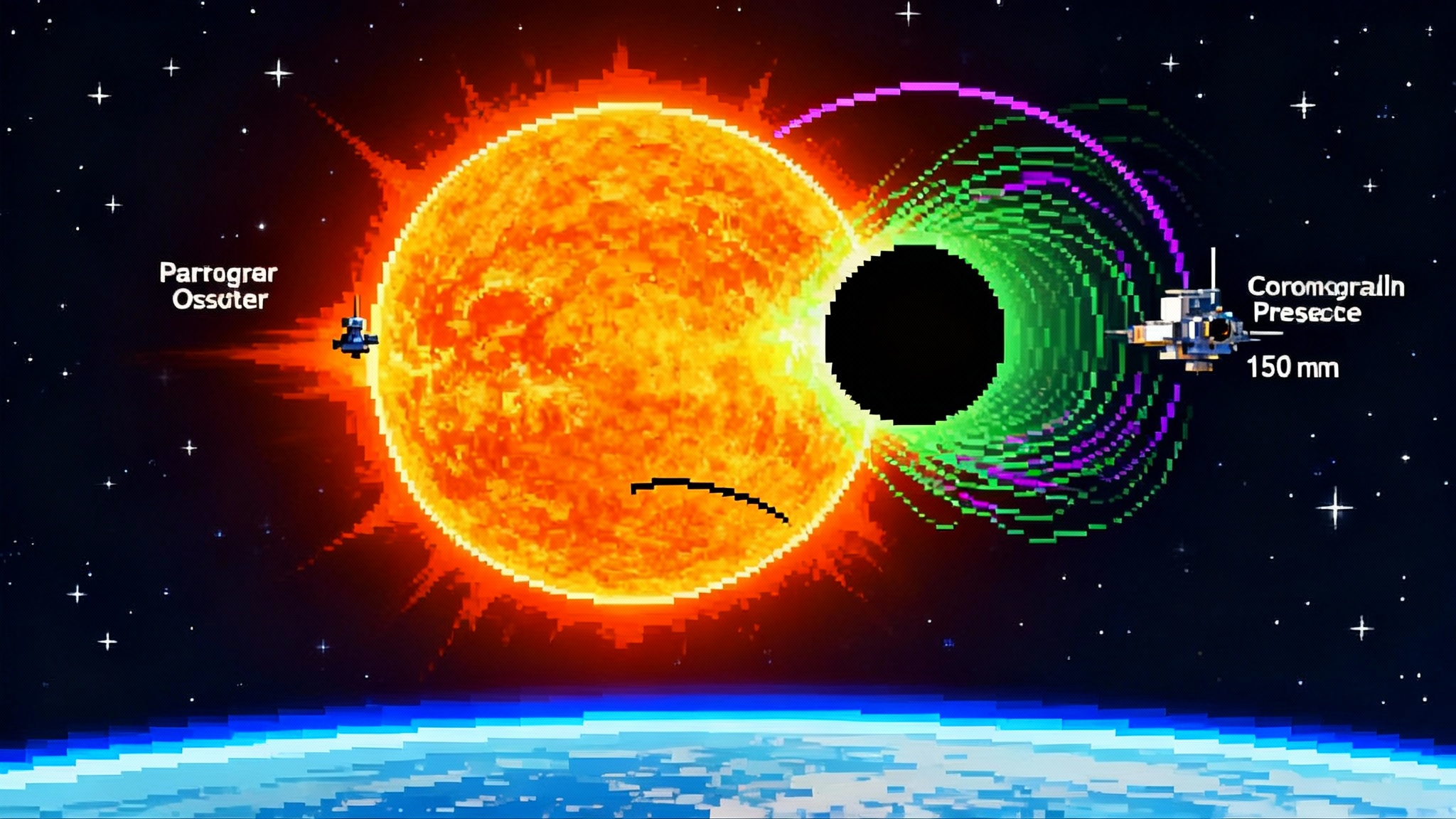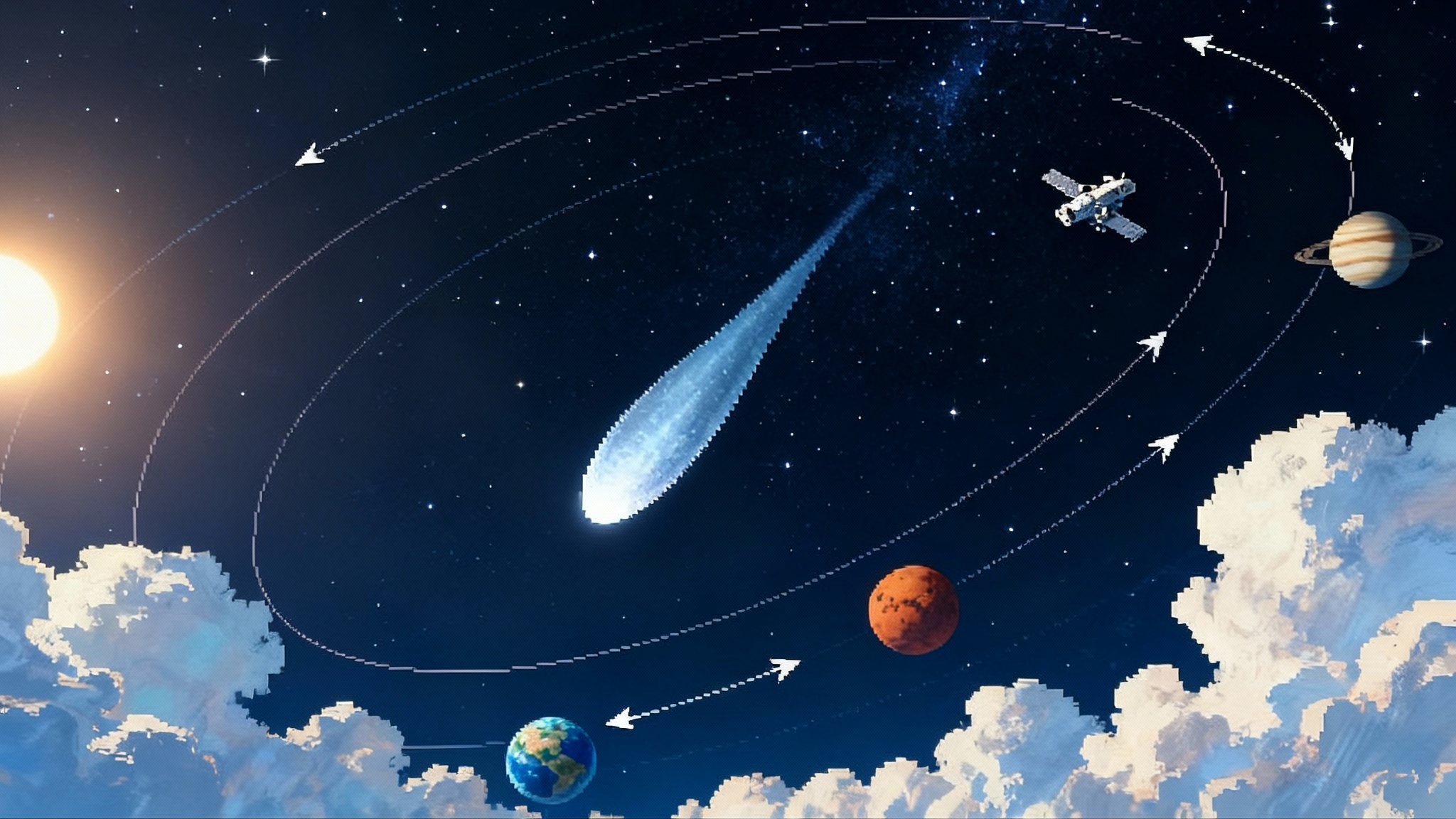Bennu's 2025 revelations reboot the origin of life story
NASA’s OSIRIS-REx sample from Bennu turned up amino acids, nucleobases, phosphates, and evaporite salts, pointing to water-rich chemistry on a small world. Here is what the results really mean, what to fund next, and how to build a comparative atlas by 2029.

Breaking open a new chapter in an old story
When the sample canister from NASA’s OSIRIS-REx mission clicked open in a Houston clean room in late 2023, scientists hoped for a few grams of primitive dust. What they have reported across 2024 and 2025 is bigger: a layered story written in carbon-rich organics, salt minerals that grew in ancient brines, and fragments of rock that formed at very different temperatures and times. In January 2025, NASA detailed the first results from the international science teams, including amino acids, all five nucleobases used by life on Earth, abundant ammonia, and evaporite salts that only form when water lingers and dries. These are not signs of life, but they are the pantry of ingredients and the messy kitchen where new chemistry can happen. NASA detailed the first results.
Think of Bennu’s sample as a box of kitchen staples spilled across a tiled floor. There is sugar and salt, a splash of broth, and bits of spices from different cuisines. The tiles are heated unevenly by sunlight and cooled by shadow, and someone occasionally shakes the floor. Given enough time, some ingredients clump, others dissolve and re-crystallize, and a few combine into new flavors. Bennu tells us that the early Solar System offered that kind of kitchen on small worlds, and that pieces of those kitchens fell to Earth for eons.
What Bennu actually brought home
The Bennu sample is not a single rock. It is a mixture of fine grains and pebbles from a rubble-pile asteroid whose parent world formed from ice and dust. Several lines of evidence point to water-rock interactions that lasted long enough to leave a mineral record. Scientists find clay minerals that carry hydroxyl groups, salts that suggest brines evaporated away, and phosphates that are unusually pure and coarse for extraterrestrial materials. Together they paint a picture of a small world that warmed just enough for ice to melt, brine to circulate, and chemistry to run.
Alongside those water-altered minerals sit molecules that, on Earth today, show up in biochemistry. Amino acids, which are the small hooks that proteins build from, are present in a diverse set. Nucleobases, which pair up to encode genetic instructions in DNA and RNA, are there too. Ammonia is abundant, which matters because ammonia makes pathways to build amino acids and nucleobases more efficient. Formaldehyde is present, and it reacts with ammonia and other carbon compounds to make more complex molecules. None of this proves life. It shows that the raw feedstock and some of the easy reaction routes were available on an asteroid that has never been part of biology.
Bennu’s grains also preserve a time capsule of the wider Solar System and possibly even interstellar material. There are high temperature minerals that form close to the Sun and isotopic fingerprints that look like they were made in colder, more distant environments. That contrast tells us its parent body gathered material from many neighborhoods and then processed it gently. The result is a sample that looks both primitive and altered, like an old recipe card that has been splashed, stained, and edited over billions of years.
Why asteroids make sense as couriers of life’s ingredients
It is tempting to imagine that Earth brewed everything on its own. But the surface of the early Earth was a rough kitchen. It suffered large impacts, heavy volcanism, and swings in temperature. Asteroids offered several advantages as couriers and reactors.
- They arrive with organics already made. Radiation and simple chemistry in cold space can assemble carbon-rich molecules, then shield them inside rock.
- They concentrate water and salts. Where ice melts inside an asteroid, water can collect in pores and fractures. Brine is a superb chemical medium. It dissolves, transports, and later deposits minerals, including phosphates that are central to energy transfer in living cells.
- They are pressure cookers. Radioactive decay and impacts provide low, steady heat. That warmth drives reactions without melting everything beyond recognition.
- They deliver gently. Rubble-pile asteroids like Bennu are weakly bound. When pieces fall to Earth as meteorites, many arrive at velocities and angles that preserve organics and minerals. That is why pristine sample return is so powerful: it allows us to compare what survives entry with what was present before. The NEO Surveyor mission will expand targets and give us more small worlds to study with context.
If you want to test the idea that asteroids stocked early Earth’s pantry, you would look for three things. First, the ingredients themselves in pristine form. Second, a history of liquid water that could bring those ingredients together. Third, a diversity of environments, because prebiotic chemistry is a generalist. On Bennu, all three boxes are checked.
How Bennu changes the playbook
Before OSIRIS-REx, the field leaned on meteorites that fell randomly and samples from the Ryugu mission in 2020. Bennu’s sample is larger, and it arrives with a full context. We know exactly where it came from on the surface, what the site looked like, what the temperatures and spectra were, and how the spacecraft collected the material. That context lets the lab results do more.
Three implications stand out.
-
Phosphorus is not scarce if the setting is right. The discovery of magnesium-sodium phosphates points to evaporating brines that can concentrate phosphorus. Phosphorus is tough to mobilize on Earth; many prebiotic scenarios wrestle with how to make it available. Bennu shows a natural concentrating mechanism on small bodies.
-
Prebiotic chemistry prefers mixed neighborhoods. The combination of high temperature grains and low temperature organics means ingredients from different zones collide inside a small world. That mixing may be why recipes that seem unlikely in a single environment become plausible across many.
-
Space weathering is not a simple eraser. Micrometeorite hits and solar photons leave glassy splashes and altered rims, but those effects can also create reactive surfaces. That is a different kind of lab bench, not just a destructive force. It may have catalyzed further chemistry on exposed grains.
The forward case: make the late 2020s a comparative atlas of prebiotic chemistry
Bennu’s chemistry is a starting gun, not a finish line. The smartest move now is to treat the late 2020s as a window to build a side-by-side atlas of prebiotic environments across the Solar System. That means three concrete actions.
1) Keep OSIRIS-APEX funded through the 2029 Apophis encounter
The OSIRIS-REx spacecraft did not retire. Renamed OSIRIS-APEX, it is on course to meet asteroid Apophis during its close Earth flyby in 2029. The spacecraft has already endured perihelion passes by flying closer to the Sun than it was designed to do. NASA has documented the approach and thermal strategies in engineering updates, including its second perihelion crossing in late 2024 and the next one scheduled in 2025. Continued operations funding keeps a proven spacecraft and team ready to watch a near-Earth asteroid get reshaped by a deep planetary flyby. That is a once-per-century natural experiment in how gravity, tides, and vibrations can expose fresh material and reset an asteroid’s surface. OSIRIS-APEX flight updates.
Why it matters: Apophis is compositionally different from Bennu. Observing changes before, during, and after the flyby can reveal how quickly fresh interiors are exposed, how boulders fracture, and whether chemistry at the surface turns on again when new grains meet sunlight and vacuum. The lesson feeds directly into sample strategy for future missions and into planetary defense, where surface mechanics influence how we deflect or nudge hazardous objects.
How to do it: Maintain a clear budget line for OSIRIS-APEX operations through 2029, including science team support. The spacecraft is built by Lockheed Martin Space with operations and science leadership across NASA Goddard, the University of Arizona, and partner institutions. This is a rare case where the asset is already in flight and paid for. The marginal dollars return high science value.
2) Green-light a Ceres sample return and a primitive-comet sample return
Ceres: The largest object in the asteroid belt hosts salts and organics at the surface, with evidence for past brines and possibly a residual interior. A targeted sample from a bright salt-rich deposit and a dark organic-rich unit would test whether the same phosphate and evaporite chemistry seen on Bennu plays out on a bigger, longer-lived body. A focused mission could lift tens of grams of material from two sites and return by the early 2030s.
Primitive comet: Comets preserve even colder chemistry. A sample from a low-activity, primitive comet nucleus would extend the atlas outward, capturing ices, organics, and fragile salts that cannot survive atmospheric entry. A mission that collects with ultra-gentle techniques and caches the sample at cryogenic temperatures would let us compare side by side: asteroid brine chemistry, dwarf-planet brine chemistry, and comet ice chemistry. China’s Tianwen-2 mission concept is a timely reference point for flexible small-body sampling.
Why together: It is the comparison that matters. Bennu shows that water plus salts plus organics can do a lot on small bodies. Ceres tells us what happens when the reaction vessel is larger and lasts longer. A primitive comet reveals the feedstock before warm processing. With three samples, we can map which ingredients recur, which reaction steps are universal, and which are local quirks.
How to do it: Pick mature mission concepts and hold a downselect in 2026. Keep the payloads simple and proven. Focus on sample integrity over advanced remote sensing. Use commercial heavy-lift options for flexible trajectories. Make the mission operations schedule mesh with OSIRIS-APEX so teams can cross-calibrate.
3) Stand up faster, smarter curation and analysis pipelines
Bennu’s sample showed that pristine handling pays off. It also showed that the time from return to first results can be shortened without sacrificing rigor. The next step is to institutionalize the pace.
- Curation as a product line: Treat sample cataloging, sub-sampling, and contamination knowledge as a software-like release cycle with sprints and version control. That gives the community predictable access dates and clear provenance.
- Open assay menus: Publish a standing menu of analytical workflows that outside teams can request, from microtoming to isotope ratio mass spectrometry, with known turnaround times. Bundle small requests to reduce instrument overhead.
- Data pipelines first: Build standardized, cloud-hosted data structures for spectra, images, and isotopic data. Require that every dataset carries machine-readable metadata about handling, orientation, and context. That makes cross-lab comparisons fast and removes the friction that often slows synthesis. See how the Mars Sample Return reboot accelerates curation.
- Cross-mission teams: Fund analysis teams that hold at least one investigator with Bennu experience, one with comet or Ryugu experience, and one with Ceres-geophysics experience. Comparative questions get answered when the experts write one another’s figures.
What the chemistry implies for life’s first steps
Chemistry does not care about planets. It cares about energy gradients, solvents, and time. Bennu provides a test case for how those come together before life. Salty water concentrates phosphate and other ions. Pores and fractures create nanoscale spaces where molecules can align and react. Pulses of heating from radioactivity or impacts can drive cycles of concentration and dilution. Ultraviolet light and tiny impacts can turn inert surfaces into catalysts. In this light, an asteroid is a modular chemical reactor that runs many experiments in parallel.
On early Earth, the arrivals of such reactors would be seasonally spaced deliveries of both reagents and partially baked products. Some ingredients would wash into ponds, others would land on beaches or get trapped in ice. Over millions of years, the planet keeps whatever combinations persist and discards what does not. That is a plausible route to the first polymers and compartments.
This is why Bennu’s specific minerals are not just trivia. Phosphates explain how energy-transfer molecules could become abundant. Evaporite textures show that water did not just flash through; it lingered and evaporated. The presence of nucleobases and amino acids shows that space chemistry sets the table. The absence of chondrules in many grains says the parent world formed cold and gentle, which helps organics survive. Each of these clues reduces the number of special conditions we need to assume for life’s start.
How to keep the momentum without breaking the budget
- Reuse flight-proven buses and teams. OSIRIS-APEX is a success because it extended a working platform. Do the same for a Ceres or comet sample return by adapting existing spacecraft designs and ground systems.
- Set a two-link chain for samples. Use a primary clean facility at Johnson Space Center and a secondary node at a partner lab for rapid-turnaround assays. Split the sample in a way that protects a pristine archive while feeding fast analysis.
- Reward synthesis, not just novelty. Create grants that pay for cross-mission comparisons using shared data formats. Tie funding to the delivery of interoperable datasets and reusable code.
- Grow the target list with surveys. Dedicated discovery improves context for what we sample next. The NEO Surveyor mission will expand targets and sharpen our choices.
What to watch between now and 2029
- The next perihelion operations for OSIRIS-APEX in 2025 and the incremental health checks afterward. Surviving repeated hot passes is the price of admission to Apophis.
- Additional Bennu papers that quantify the distribution of specific salts and phosphates across grain sizes. That will tell us how widespread evaporation was and where to look for similar signatures elsewhere.
- Decisions on mission selections for small-body sample returns in the 2026 to 2027 window. Early green lights keep trajectories favorable and science teams intact.
- Advances in non-destructive imaging, like synchrotron-based tomography and atom probe tomography, that can map organics and minerals in three dimensions before a grain is cut. Better pre-cuts mean faster results with less lost context.
The bottom line
Bennu’s 2025 chemistry results do not whisper that life is common. They say something more useful. They show that the ingredients and the cookware are widespread, and that small bodies can run the kinds of reactions that make biology plausible later. If we act now, we can turn a single sample into a comparative atlas that covers an asteroid, a dwarf planet, and a primitive comet within the decade. Keep OSIRIS-APEX on course through 2029. Fund a Ceres and a primitive-comet sample return with simple, integrity-first payloads. Build curation and analysis pipelines that move at the speed of discovery. Do these three things and by the late 2020s we will read the origin-of-life story not as a myth told once, but as a recipe book with many versions, all scrawled in salts, clays, and carbon from the small worlds that have always been our couriers.








